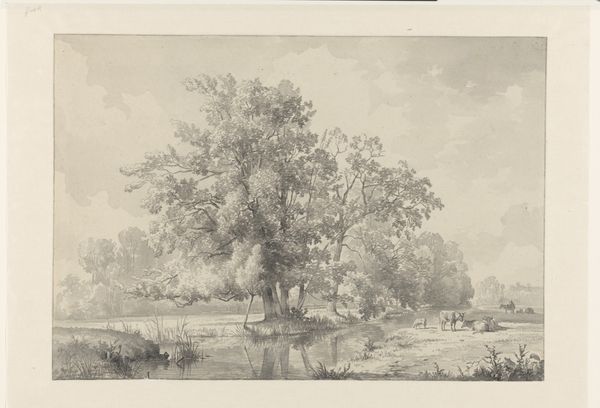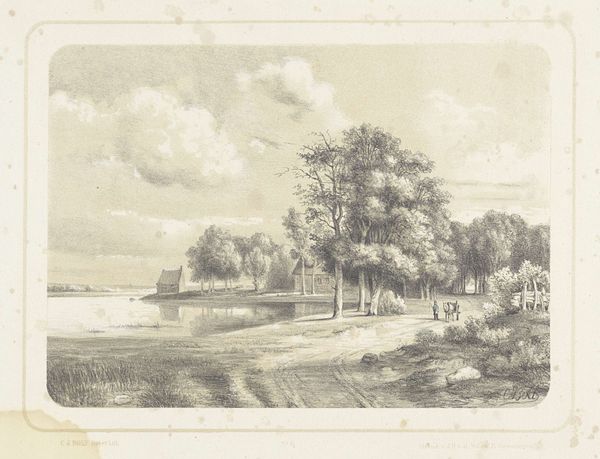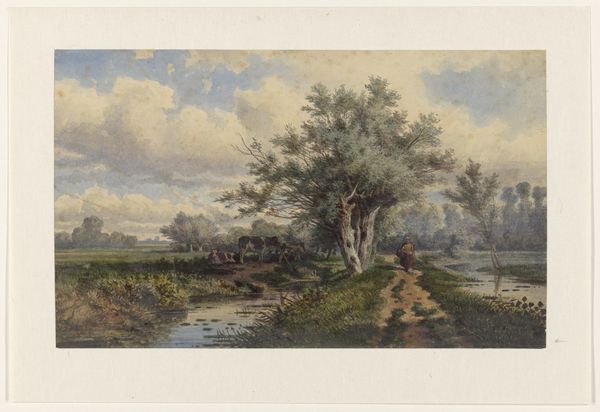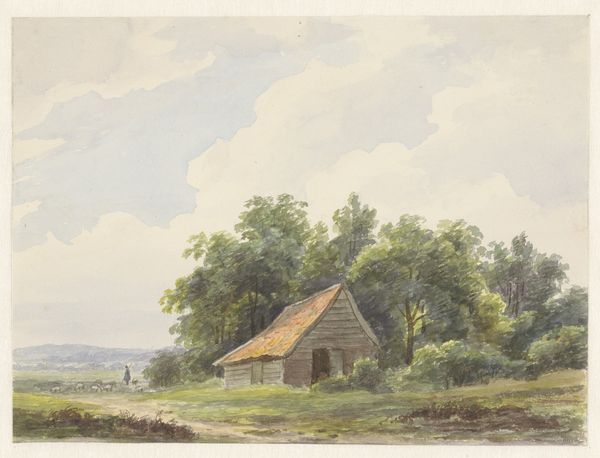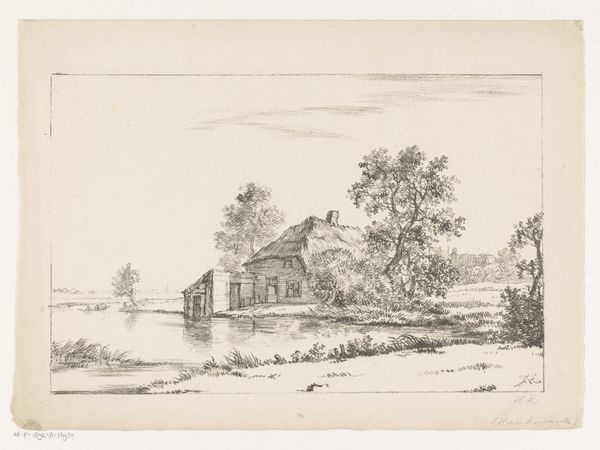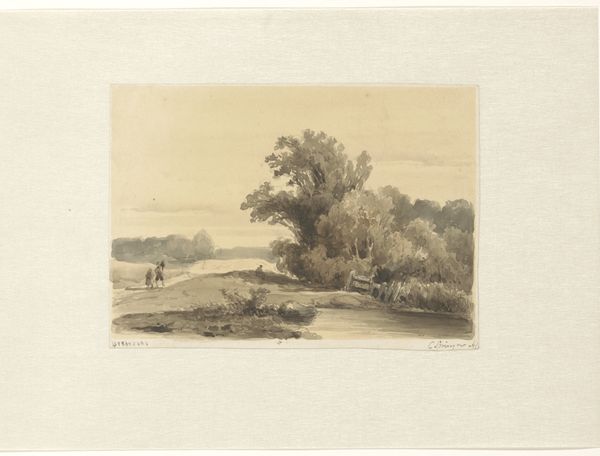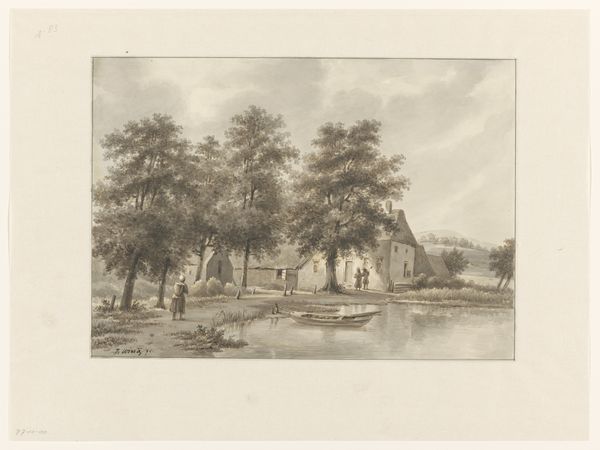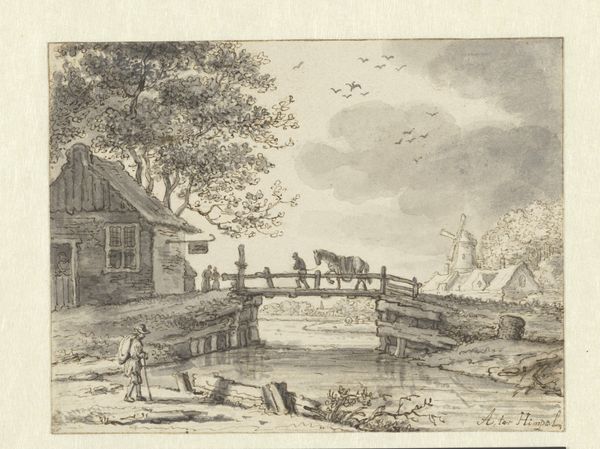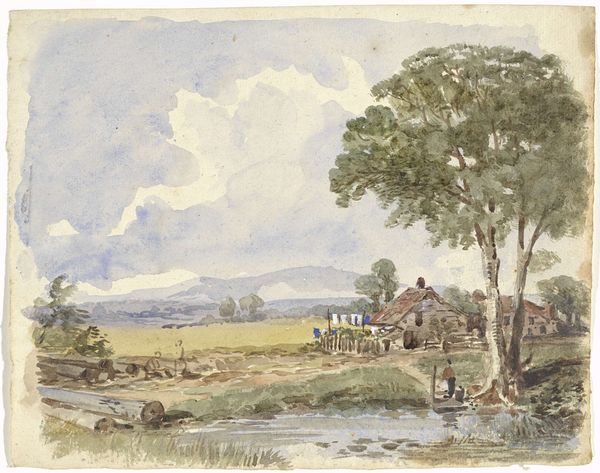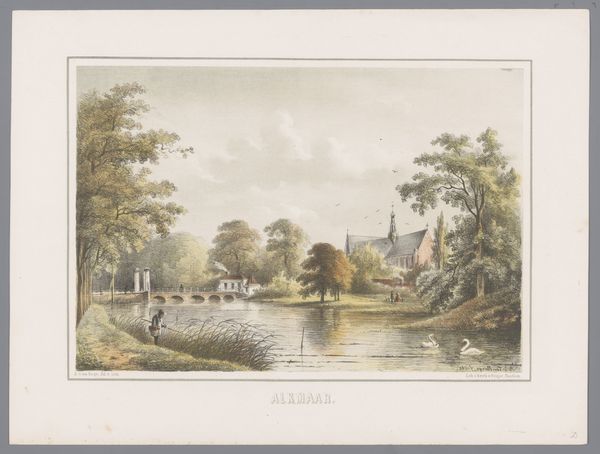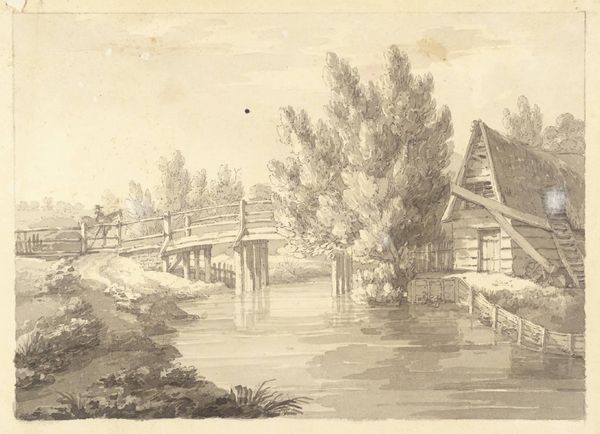
plein-air, watercolor, pencil
#
water colours
#
plein-air
#
landscape
#
watercolor
#
coloured pencil
#
romanticism
#
pencil
#
watercolor
Dimensions: height 152 mm, width 221 mm
Copyright: Rijks Museum: Open Domain
Curator: This is a landscape work titled "Landschap met wandelaar en huis aan het water," dating to approximately the 19th century. The piece employs both watercolor and pencil. Editor: It’s really quite serene. The palette is subdued, mostly greens and blues. The rendering gives it a gentle quality; almost like a half-remembered dream. Curator: Considering the time, the Romantic movement clearly had an impact. We see this idealization of nature, a focus on personal experience. Landscape painting offered a stage for explorations of national identity, particularly how those tied into colonial powers at the time viewed the ‘untamed’ environments they traveled and settled. Editor: It also speaks to the practicality of plein-air painting at that time. The scale is modest; you could easily transport your watercolors and pencils to the site and directly record what you observed. And look closely at how light touches the water’s surface – that's pure observation. It gives it a freshness, a spontaneity. I wonder who this wandering figure is… What's his relationship to the setting? Curator: Good question! One reading might cast the wanderer figure as representative of shifting societal roles – of labor perhaps made more mobile in response to larger systems of governance. It also could simply represent the romantic ideal of harmonizing with the land and one’s place in nature, made material. Editor: The placement of the house is interesting, isn't it? How it seems integrated, nestled among the trees? Not imposing or dominant but complementary to it. A place for rest or reflection perhaps. That and the mark-making is gorgeous and simple. It must have taken skill to make the process appear so effortless! Curator: Absolutely, and the history of materials becomes interesting here as we consider availability to the artist as well. Watercolors especially are made and purchased through larger infrastructures of the pigment and textile trades. Editor: Thinking about how the artist captured the feel of a time and place through these accessible materials, the work holds enduring value for its careful and unpretentious character. Curator: I agree, it provides a nuanced lens through which to view artistic practices alongside broader sociopolitical landscapes of the time.
Comments
No comments
Be the first to comment and join the conversation on the ultimate creative platform.

